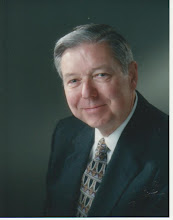The Relationship of Leisure to Education
AS EARLY AS 1918, the National Education Association stated the following as one of their objectives: the worthy use of leisure. These educators, and most who have followed in their path, came to the conclusion that the purpose of our schools was to prepare students for living life. They realized that life, including every age and every stage of every individual, was going to include leisure - and that people needed to know how to use it in a "worthy" manner.
Education affects leisure in two ways: (1) through the teaching of leisure-related concepts and skills [leisure education]; and (2) through the provision of leisure activities [extra-curricular or co-curricular activities].
In the past, two developments have significantly enhanced the status of extra-curricular or co-curricular activities in our school systems. First, the national alarm in the late 1950s over the lack of physical fitness among school-age children and youth. This was the time when post World War II dominance was ending, and it was the beginning of the space age. The President's Council on Physical Fitness and Sports came about because of this development. Second, in the early 1970s came Title IX. This act opened the door for increased female participation in sports activities. The result of Title IX was that schools were required to offer athletic programs in equal number for girls as well as boys.
In more recent years as educational institutions were faced with budget constraints, some programs of intramural and recreational activities, as well as some athletic programs, were dropped. Even physical education classes, which had been required by state law, were scaled back or canceled. However, since the turn of the New Century, America now has a new problem: obesity. Now, in today's world, more and more educators and community leaders are seeing once again the need for strong physical activity opportunities in our schools.
In our nation's past, there has been a relationship of leisure to education. Today, it is as strong as ever!
Education affects leisure in two ways: (1) through the teaching of leisure-related concepts and skills [leisure education]; and (2) through the provision of leisure activities [extra-curricular or co-curricular activities].
In the past, two developments have significantly enhanced the status of extra-curricular or co-curricular activities in our school systems. First, the national alarm in the late 1950s over the lack of physical fitness among school-age children and youth. This was the time when post World War II dominance was ending, and it was the beginning of the space age. The President's Council on Physical Fitness and Sports came about because of this development. Second, in the early 1970s came Title IX. This act opened the door for increased female participation in sports activities. The result of Title IX was that schools were required to offer athletic programs in equal number for girls as well as boys.
In more recent years as educational institutions were faced with budget constraints, some programs of intramural and recreational activities, as well as some athletic programs, were dropped. Even physical education classes, which had been required by state law, were scaled back or canceled. However, since the turn of the New Century, America now has a new problem: obesity. Now, in today's world, more and more educators and community leaders are seeing once again the need for strong physical activity opportunities in our schools.
In our nation's past, there has been a relationship of leisure to education. Today, it is as strong as ever!


0 Comments:
Post a Comment
<< Home